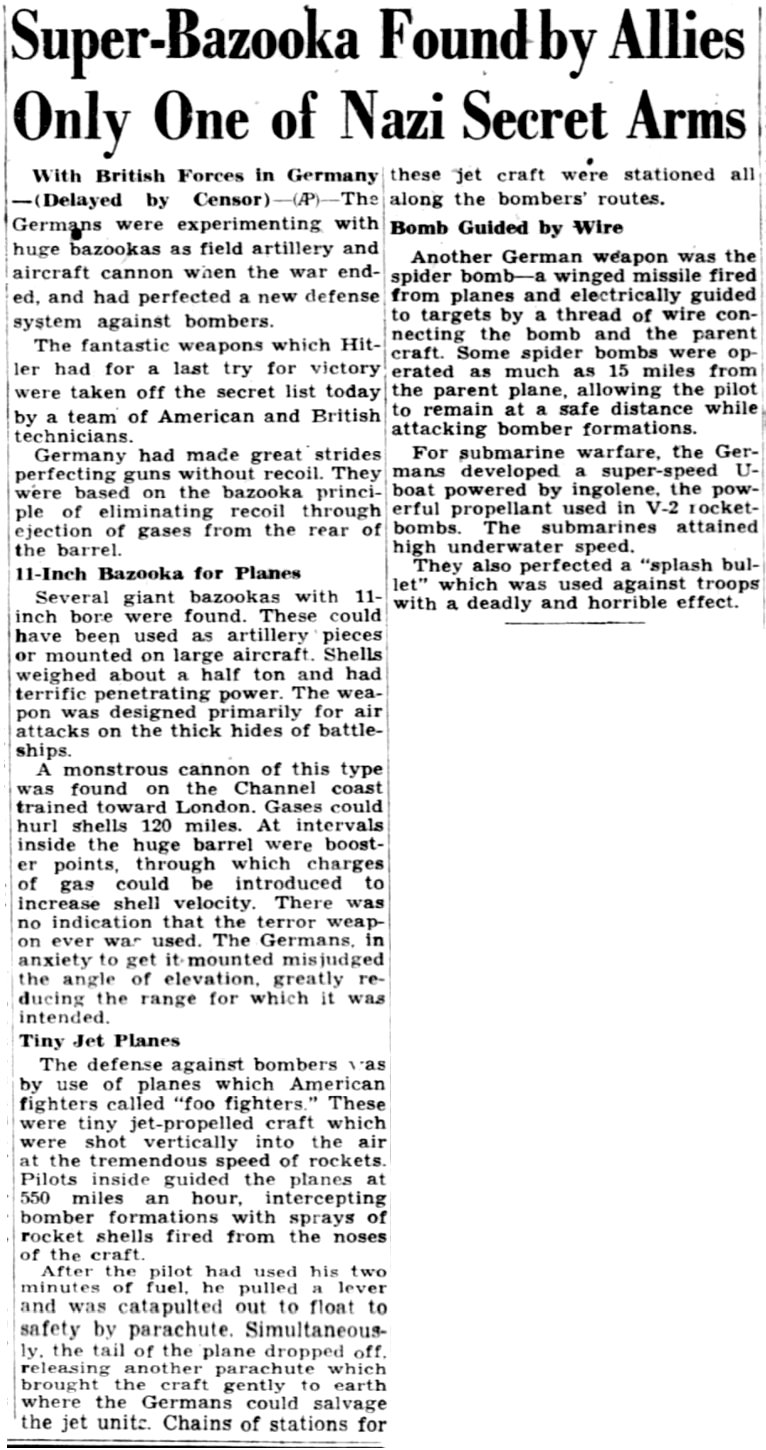The article below was published in the daily newspaper Bridgewater Courier-News, of Bridgewater, New Jersey, USA, page 2, on August 20, 1945.
See the cases of 1944 - 1945 here.

|
(Delayed by Censor) - (AP) - The Germans were experimenting with huge bazookas as field artillery and aircraft cannon when the war ended, and had perfected a new defense system against bombers.
The fantastic weapons which Hitler had for a last try for victory were taken off the secret list today by a team of American and British technicians.
Germany had made great strides perfecting guns without recoil. They were based on the bazooka principle of eliminating recoil through ejection of gases from the rear of the barrel.
Several giant bazookas with 11-inch bore were found. These could have been used as artillery pieces or mounted on large aircraft. Shells weighed about a half ton and had terrific penetrating power. The weapon was designed primarily for air attacks on the thick hides of battleships.
A monstrous cannon of this type [the V3] was found on the Channel coast trained toward London. Gases could hurl shells 120 miles. At intervals inside the huge barrel were booster points, through which charges of gas could be introduced to increase shell velocity. There was no indication that the terror weapon ever was used. The Germans, in anxiety to get it mounted, misjudged the angle of elevation, greatly reducing the range for which it was intended.
The defense against bombers was by use of planes which American fighters called "foo fighters." These were tiny jet-propelled craft [Bachem "Natter"] which were shot vertically into the air at the tremendous speed of rockets. Pilots inside guided the planes at 550 miles an hour, intercepting bomber formations with sprays of rocket shells fired from the noses of the craft.
After the pilot had used his two minutes of fuel, he pulled a lever and was catapulted out to float to safety by parachute. Simultaneously, the tail of the plane dropped off, releasing another parachute which brought the craft gently to earth where the Germans could salvage the jet unit. Chains of stations for these jet craft were stationed all along the bombers’ routes.
Another German weapon was the spider bomb - a winged missile fired from planes and electrically guided to targets by a thread of wire connecting the bomb and the parent craft. Some spider bombs were operated as much as 15 miles from the parent plane, allowing the pilot to remain at a safe distance while attacking bomber formations.
For submarine warfare, the Germans developed a super-speed U-boat powered by ingolene, the powerful propellant used in V-2 rocket bombs. The submarines attained high underwater speed.
They also perfected a "splash bullet" which was used against troops with a deadly and horrible effect.